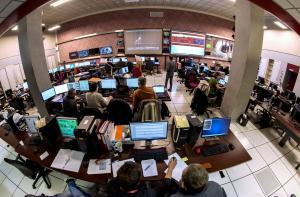Revamped tokamak completes 1st phase of operation
One day, in the latter half of this decade, it will be routine at ITER: dozens of operators, with eyes riveted to their individual monitors as numbers, graphs and real-time views of ongoing plasmas appear on large screens on the wall. Just like in the control room at WEST on an ordinary afternoon, some plasma shots will trigger applause and cheers, others will be greeted with a bit of disappointment. The session's pilot, or scientific coordinator, will ask the operator in charge of ion cyclotron heating to release a bit more power; a colleague tasked to monitor antenna temperature will warn that some hot spots are developing; there will be discussions, negotiations, suggestions ... Like a cheese soufflé, a good "shot" relies on a delicate combination of ingredients and, at times, a chef's inspiration.
At WEST, less than a kilometre away from the ITER construction site, the counter displays 55,799—the number of plasma shots since 1988 when, as Tore Supra, the midsize tokamak entered operation at CEA-Cadarache. Over the past three decades, Tore Supra has evolved into a different, almost brand-new machine: magnetic coils have been added to confine the originally circular plasma into an ITER-like "D" shape, and the carbon limiter is being progressively replaced by a tungsten divertor closely resembling ITER's.



